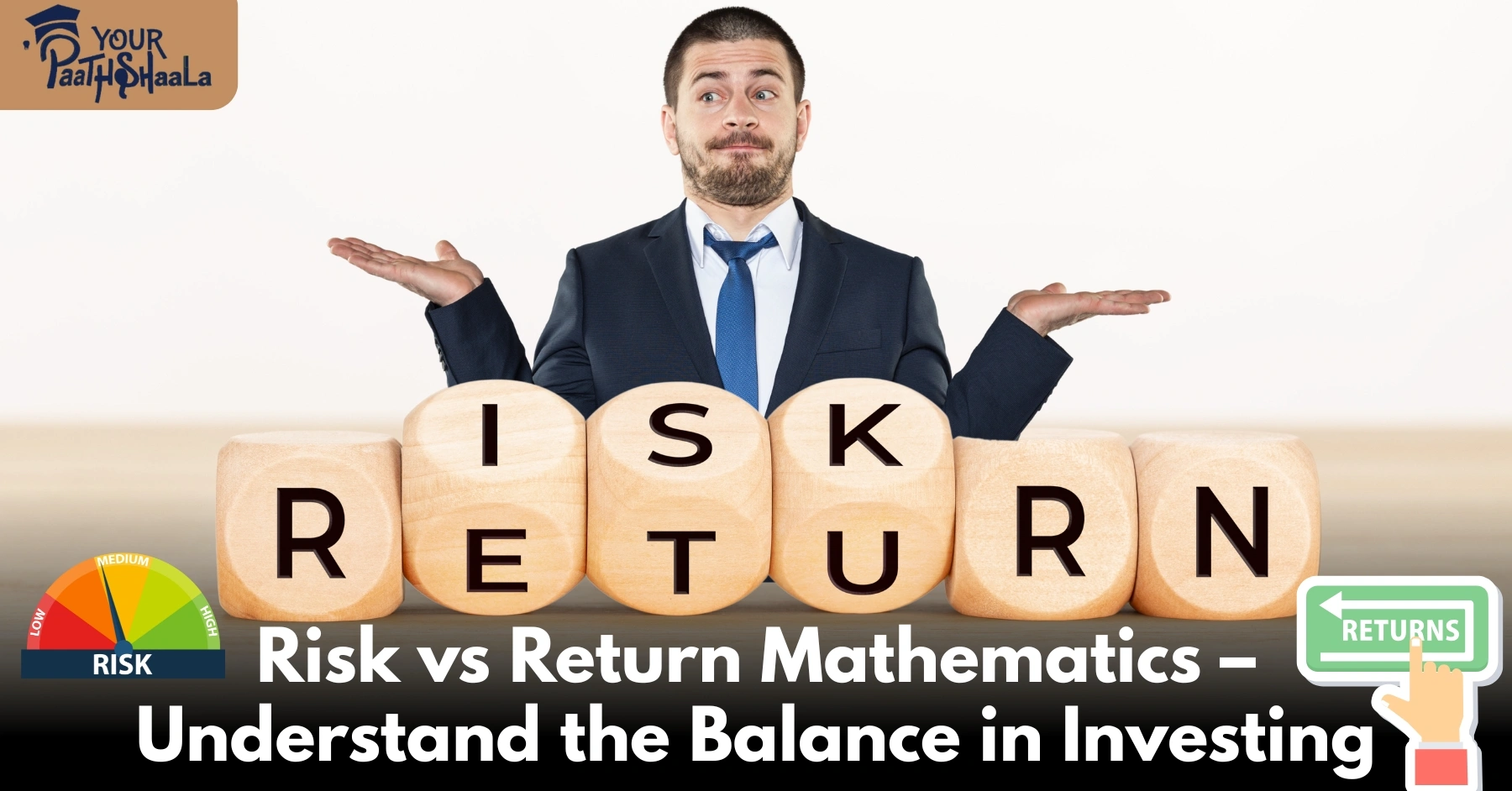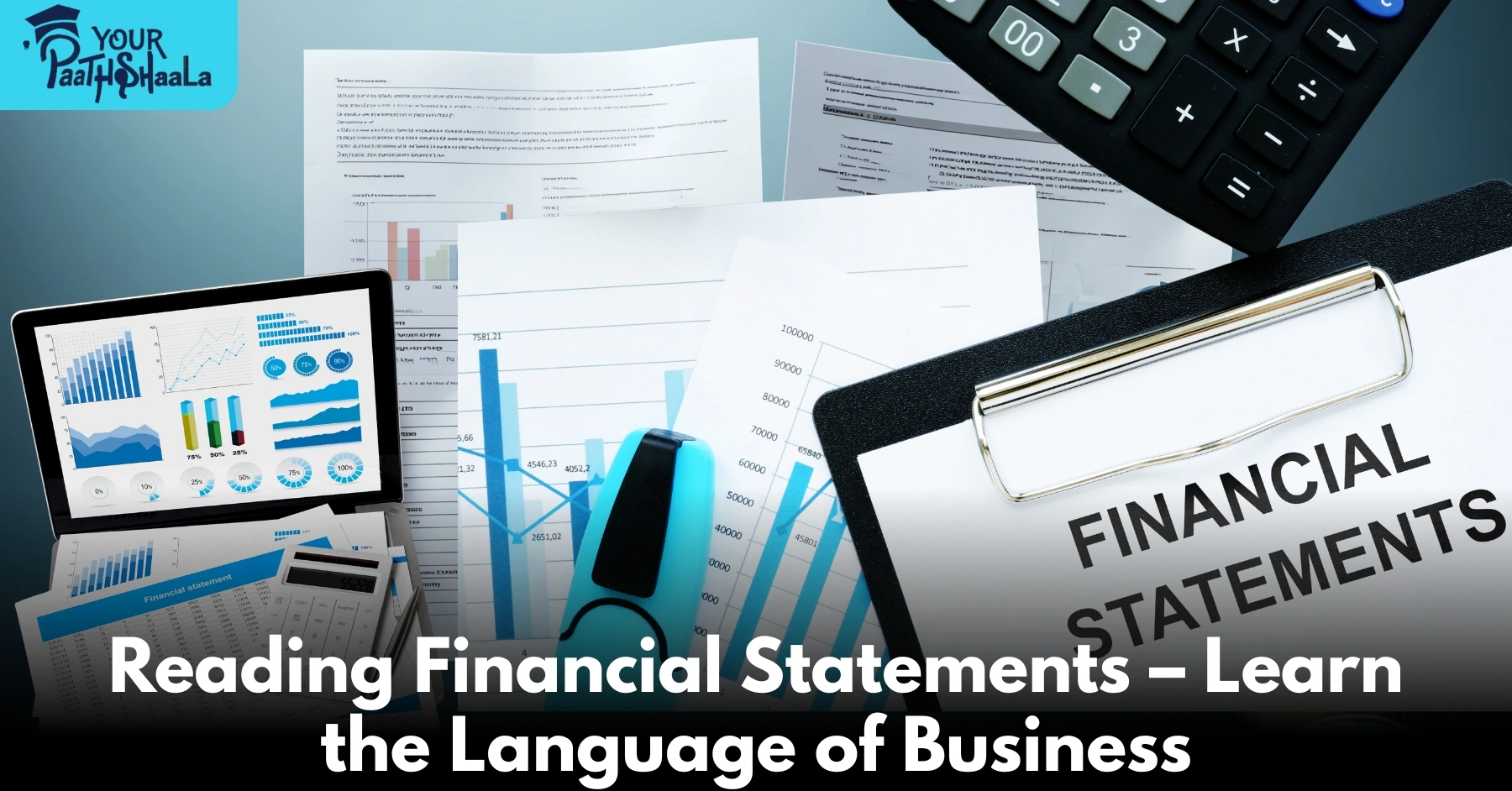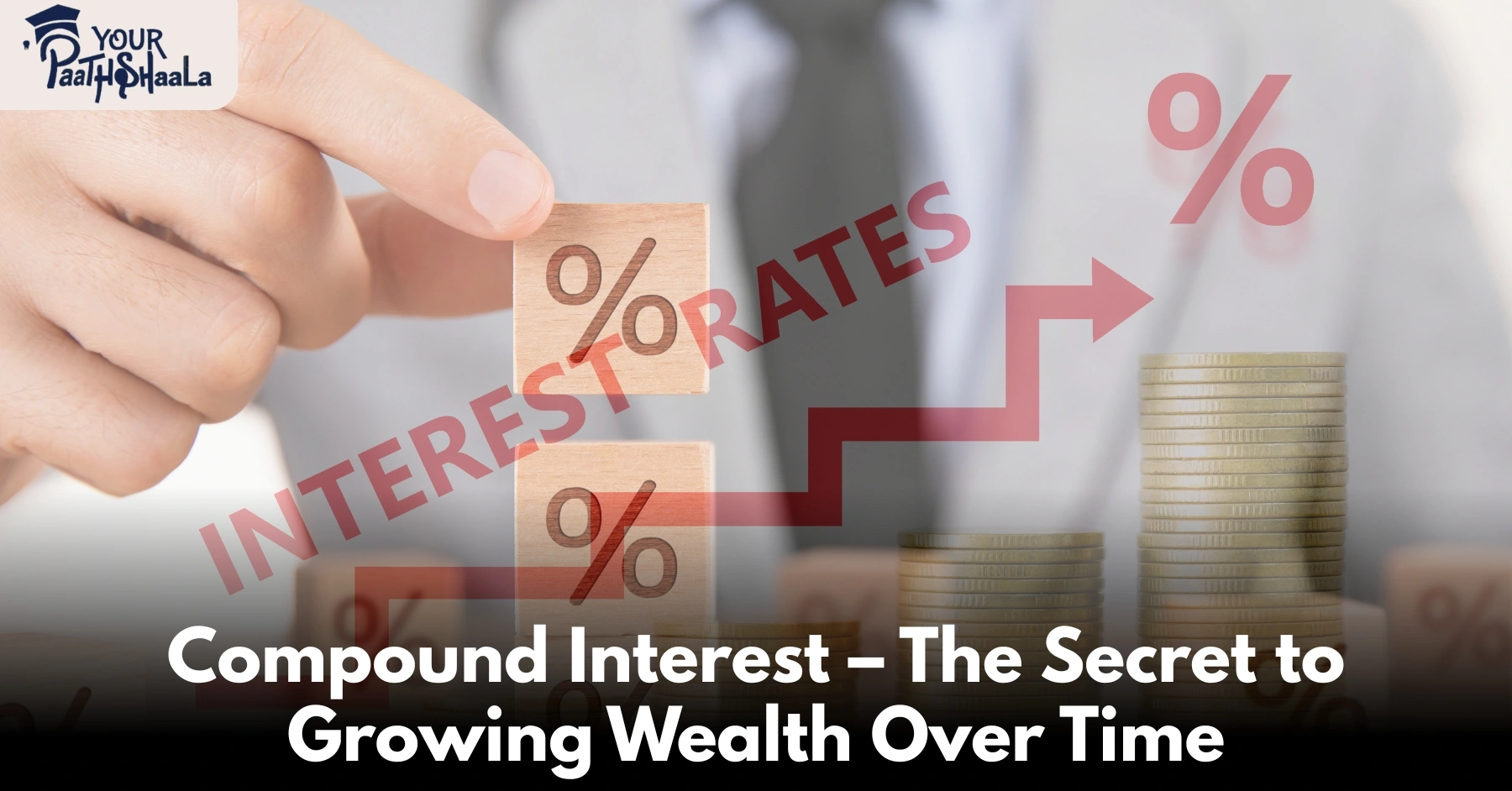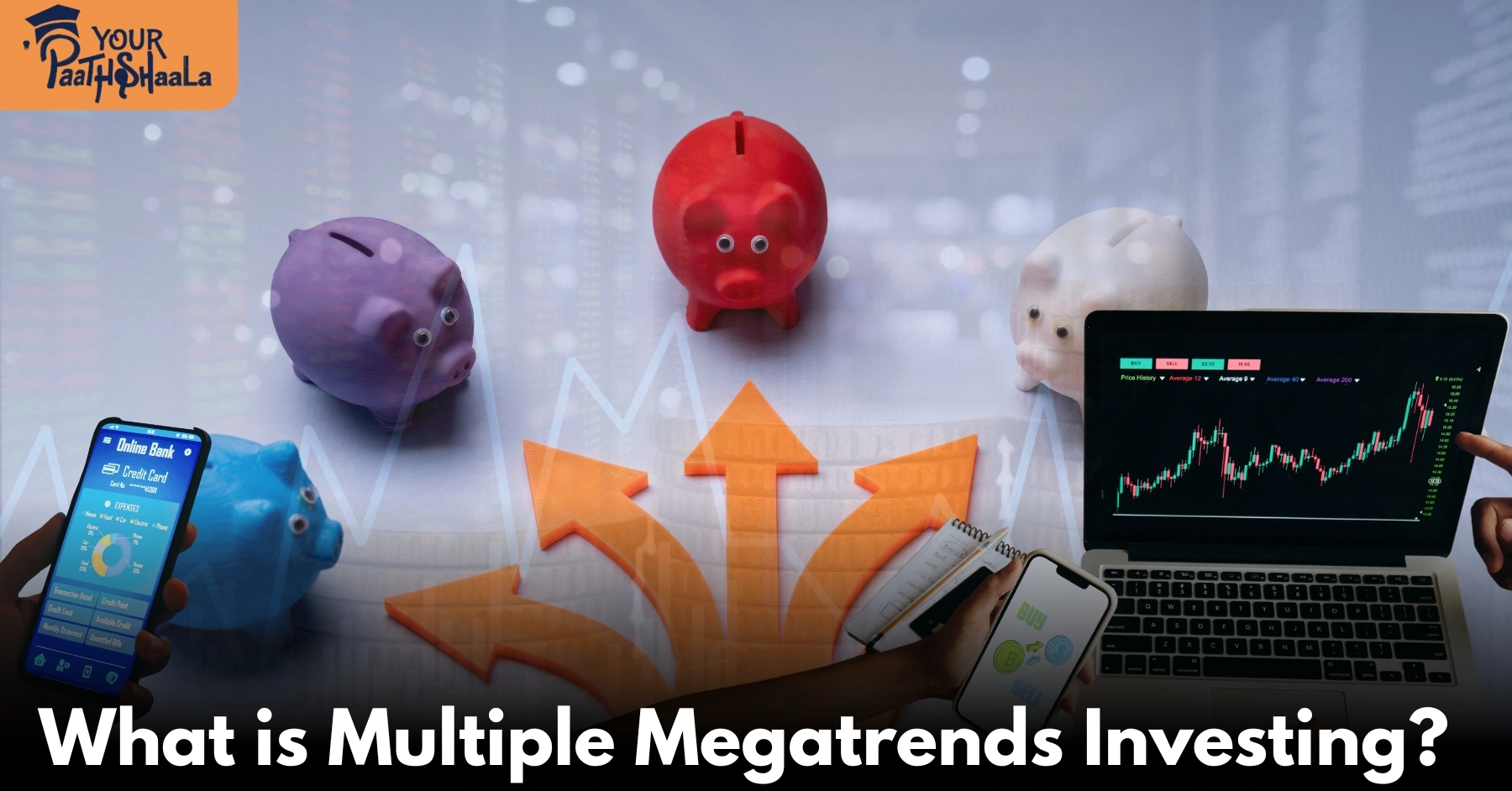Risk vs Return Mathematics – Understand the Balance in Investing
Every investor, from a beginner buying their first stock to a professional managing billions, faces one universal truth: higher returns come with higher risks. There is no shortcut, no guaranteed formula, and no magical investment that offers sky-high returns without uncertainty.
This relationship, known as risk vs return, is the foundation of all investing. If you want your money to grow, you must accept some level of risk. At the same time, taking on too much risk without understanding it can destroy wealth just as quickly.
The good news? Risk can be measured, managed, and balanced with smart strategies. You don’t need to gamble blindly. With the right approach, you can match your risk tolerance with your financial goals and build a portfolio that works for you.
At YourPaathshaala, we simplify complex financial ideas into practical lessons. Let’s explore the mathematics, psychology, and strategies behind risk vs return so you can start making better investment choices.
What Is Risk in Investing?
In everyday life, “risk” means the possibility of something going wrong. In investing, risk refers to the uncertainty of returns—the chance that your actual outcome may differ from what you expect.
Types of risk include:
Market Risk: Prices move up and down unpredictably.
Credit Risk: A bond issuer may default.
Liquidity Risk: You may not be able to sell an investment quickly.
Inflation Risk: Rising prices eat away at your returns.
Currency Risk: Foreign investments may fluctuate with exchange rates.
In short, risk is everywhere in investing. The question is not whether it exists, but how much of it you’re willing—and able—to take.
What Is Return in Investing?
Return is the reward you get for taking risk. It comes in two main forms:
- Capital Appreciation: The increase in value of an asset (e.g., buying a stock at ₹100 and selling it at ₹150).
- Income: Regular payments, such as dividends from stocks or interest from bonds.
The key principle: higher potential returns usually require accepting higher levels of risk.
Government bonds: low risk, low return.
Blue-chip stocks: moderate risk, moderate return.
Cryptocurrencies: very high risk, potentially very high return.
This trade-off creates the “risk-return spectrum.”
The Mathematics of Risk vs Return
Investors often use metrics to quantify this balance. Let’s simplify the math.
1. Expected Return
The average return you anticipate based on probabilities.
Example: If a stock has a 50% chance of gaining 20% and a 50% chance of losing 10%, the expected return is:
(0.5 × 20%) + (0.5 × –10%) = 5%.
2. Standard Deviation (Volatility)
Measures how much returns fluctuate.
A stock with stable 8% yearly returns has low volatility.
A stock that swings between –20% and +30% has high volatility (and higher risk).
3. Sharpe Ratio
Return earned per unit of risk. A higher ratio means you’re getting better returns for the risk taken.
4. Risk-Free Rate
The baseline return from a virtually risk-free investment (like government bonds). Any investment should be compared against this benchmark.
While you don’t need to master advanced math to invest, knowing that risk and return can be measured helps you make rational decisions instead of emotional ones.
The Role of Diversification
You’ve probably heard the saying: “Don’t put all your eggs in one basket.”
That’s diversification in a nutshell. By spreading your money across different asset classes, industries, or regions, you reduce the impact of one investment’s failure.
If you own only one company’s stock, bad news could wipe you out.
If you own 20 companies across sectors, one failure won’t hurt as much.
Mathematically, diversification reduces unsystematic risk (company- or industry-specific risk) but cannot eliminate systematic risk (market-wide risk).
The goal isn’t zero risk—it’s the right balance of risks that complement each other.
Time Horizon and Risk
Your time horizon—the length of time you plan to invest—plays a critical role in balancing risk vs return.
Short-term (0–3 years): Lower risk is better, since you’ll need the money soon. (e.g., savings accounts, bonds).
Medium-term (3–10 years): Moderate risk may work, with a blend of stocks and bonds.
Long-term (10+ years): Higher risk is acceptable because short-term losses can be recovered. Stocks and growth assets dominate here.
Example:
If you invest ₹1,00,000 in stocks for one year, a market crash could cut it to ₹70,000. But over 15 years, the likelihood of recovery (and growth) is much higher.
That’s why young investors are often encouraged to take more risk, while retirees should prioritize stability.
Risk vs Return in Different Asset Classes
1. Equities (Stocks)
High risk, high potential return.
Volatile in the short term but historically strong in the long run.
2. Bonds
Lower risk, lower return.
Provide stability and income, balancing stock volatility.
3. Real Estate
Moderate to high risk depending on location and leverage.
Offers potential appreciation and rental income.
4. Mutual Funds/ETFs
Diversified exposure, spreading risk.
Risk depends on fund type (equity vs debt).
5. Commodities (Gold, Oil, etc.)
Hedge against inflation, but prices fluctuate.
Useful for portfolio balance.
6. Cryptocurrencies
Extremely high risk, speculative.
Potentially high reward, but suitable only for a small portion of portfolios.
Investor Psychology and Risk
Numbers alone don’t drive decisions—emotions do. Many investors fail not because of bad math but because of poor behavior.
Fear: Selling in panic during downturns.
Greed: Chasing hot stocks without considering risks.
Overconfidence: Believing you can outsmart the market consistently.
Loss Aversion: Feeling losses more painfully than equivalent gains.
Understanding your own psychology is just as important as understanding mathematics.
Strategies for Balancing Risk and Return
1. Asset Allocation
Decide what percentage of your money goes into stocks, bonds, real estate, etc. This is the single most important decision in investing.
2. Rebalancing
Periodically adjust your portfolio to maintain your target allocation. Example: If stocks outperform and grow from 60% to 75% of your portfolio, sell some and reinvest in bonds to restore balance.
3. Dollar-Cost Averaging
Invest a fixed amount regularly, regardless of market conditions. This reduces the impact of volatility and avoids the stress of timing the market.
4. Risk Profiling
Assess your personal risk tolerance through questionnaires and self-reflection. Your comfort level matters as much as financial theory.
5. Emergency Fund
Always keep liquid cash aside. This ensures you don’t have to sell investments at a loss when unexpected expenses arise.
Case Studies: Lessons from History
Dot-Com Bubble (2000)
Investors chasing returns in internet stocks ignored risk. When the bubble burst, trillions were lost. Balanced portfolios fared better.
Global Financial Crisis (2008)
Overexposure to real estate and risky financial products caused massive losses. Diversification and patience rewarded investors in the recovery.
COVID-19 Crash (2020)
Markets fell nearly 30% in weeks. Investors who panicked and sold locked in losses, while those who stayed invested saw quick recovery.
How YourPaathshaala Helps
At YourPaathshaala, we break down risk vs return into simple, actionable lessons:
How to measure risk and understand volatility.
How to diversify across asset classes.
Why your time horizon matters more than market timing.
How to manage emotions when markets fluctuate.
Our free demo classes give you the chance to ask questions, explore doubts, and see how risk-return concepts apply to real portfolios.
Conclusion: Smarter Decisions Begin with Balance
Risk and return are two sides of the same coin. You cannot have one without the other, but you can decide how much of each you want. By understanding the mathematics, psychology, and strategies behind this balance, you’ll be able to build a portfolio that grows while keeping risks manageable.
At YourPaathshaala, we help you turn this knowledge into practice—so you don’t just invest, you invest wisely.
Visit YourPaathshaala
Near Anjali Children Hospital, Tagore Nagar, Mathpurena, Raipur
PIN Code: 492001, Chhattisgarh Click the Call Now to start learning how financial systems really work! To check out the full article click here!













Add a Comment